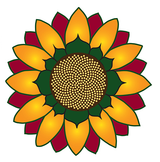When the leaves start to turn, and the sun is setting noticeably earlier - that’s when we know It's getting to be time to bring our flourishing houseplants indoors and harvest the very last of our summer crops, all while we tend to the sweet fall crops that are relishing in the cooler weather that inevitably follows.
Sometimes the slow progress towards a fall frost is a comforting thought. It's a relief to watch the weeds in your garden die back and fade and to experience the gentle settling of a cozier part of the year.
But why not enjoy the coziness of winter while also enjoying a fruitful harvest of vegetables long after the frost has done its work? Using a method called Season Extension - you can do just that. Enjoy soup season even more deeply with vegetables fresh from the winter garden.
When we discuss season extension, we’re talking about increasing the growing season at either end, meaning, growing later into the winter or starting earlier in the spring. The primary goals of season extension are protecting your crops from damage from extreme weather (hot or cold).

Understanding the Methods
The sun’s rays are energy, and as temperatures cool down, season extension is mainly a matter of harnessing this energy to serve you and your garden longer into the year. For you, this may mean utilizing a small greenhouse or hoop house. For others, it may be as simple as building a cold frame or installing floating row covers. These tools are designed to assist in capturing that energy.
The ground is a massive reservoir of heat. This heat is what protects crops at night when they’re covered, radiating from the ground and getting trapped under row cover or plastic. As the ground gets cooler and loses heat in the fall and winter, it radiates less and less. Different soils hold heat differently. Wet soils tend to radiate more heat than dry soils. Lighter sandy soils dry out and warm up faster in the spring while darker soils with a lot of organic matter tend to absorb more heat and hold it for longer.
This can also mean that it’s easier to enact season extending practices in the fall. The ground is holding more heat after a hot summer than it is in the spring, after a cold winter. The degrees of protection are higher under cover because the ground is radiating more heat, therefore more heat is being trapped. Understanding these principles can help you make the best decisions regarding methods and timing when it comes to season extension.
Studying your Garden
Depending on how long you’ve been gardening in your current location, you’ve likely already realized that different parts of your garden may be getting different amounts of sunlight. Believe it or not, your garden can also have a variety of frost dates that occur in different sections. Have you noticed these? There may be a spot that never seems to get much frost except for the deepest days of winter. There may be spots that always tend to get hit with a frost earlier than you expect it to. As the lighter frosts begin to settle in - take note of which sections may need more protection. Notes clarify and aid in the planning process year round.

The Methods at Hand
We’ve mentioned some tools for season extension above but we’ll get more into them here.
|
Tool |
Usage |
Benefit |
|
Black Plastic |
Laid out over the soil, plants are planted into it. |
This tool can keep soil temperatures up to five degrees warmer than uncovered soils. |
|
Clear Plastic |
Laid out over the soil, plants are planted into it. |
This tool can keep soil temperatures eight to fourteen degrees higher, but weeds can become a big problem. |
|
Used like a blanket for plants! They are more useful when paired with hoops to create a low tunnel. |
Can offer two to four degrees of warmth within the tunnel. Depending on the thickness, cover should maybe be removed during the day to not inhibit light accessibility. |
|
|
Hoop Houses/High Tunnels |
A permanent or semi-permanent building. |
These are by far the most effective season extension tool, but are not always super accessible to home growers. |
|
Cold Frame |
Often built cheaply at home and placed over garden beds or utilized to start seedlings earlier in the year. |
Cost effective and helpful season extension tool. |
All in all, season extension is a great way to harvest your veggies all winter long. Try experimenting with a season extension tool this year!

|
Article Written by: Hannah Gibbons |
|
About the Author: Hannah Gibbons, an employee at Sow True Seed since 2020, has nearly a decade of experience in the agricultural industry. Their passion for environmental education and regenerative agriculture has been the cornerstone of their work, aimed at making gardening accessible to all. |



